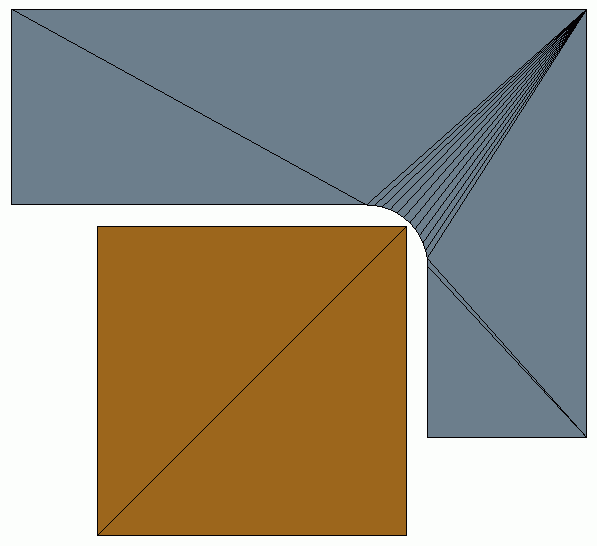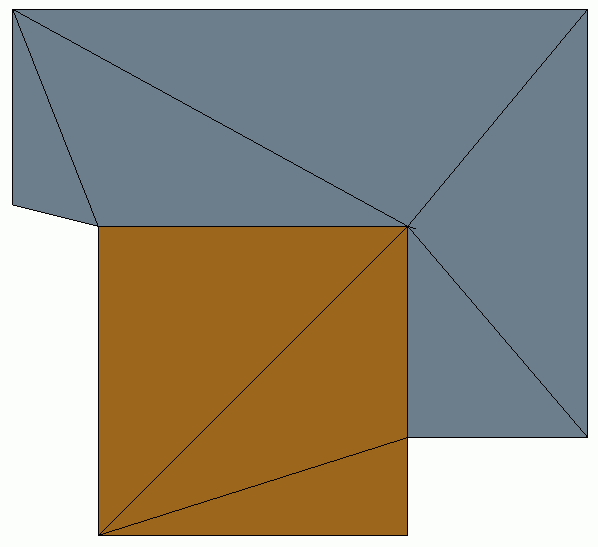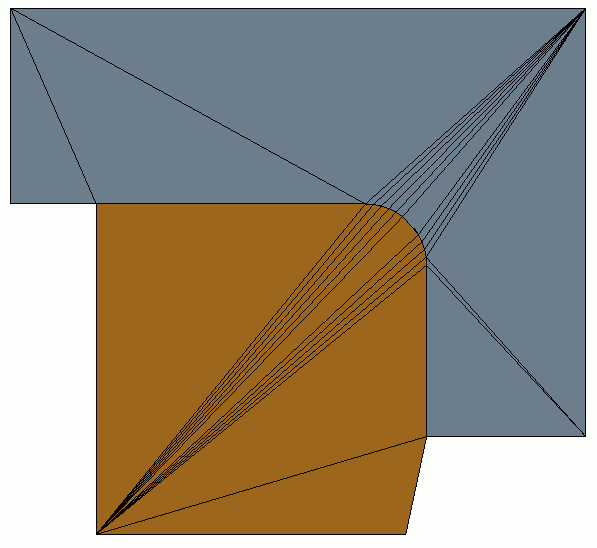Priority Indexing
When imprinting parts, at least one part is designated as the destination part and any other parts are designated as source parts. Priority Indexing lets you control which parts are the destination or source parts. The part or parts with the lowest index value have the highest priority. So any parts with the priority index of 1 are the destination parts.
The features and precise location of the destination parts are maintained during the imprint operation. However, the features of the source parts are modified to fit the features of the destination parts.
The imprint operation moves vertices of the source parts onto vertices of the destination parts. Faces from the source part that are coincident with a destination part are deleted and replaced with faces of the destination part.
Imprint priority indexing can also be useful to control the division of shared faces into part surfaces.
Part surfaces of all faces in destination parts are preserved despite being re-tessellated. However, part surfaces in the source parts change since duplicate faces from source parts are deleted during imprinting.
The number of interfaces that exist after imprinting depends on the assignment of priority indexes.
The Effect of Priority Indexing on Part Shapes


